Rhythm and blues, frequently abbreviated as R&B or R'n'B, is a genre of popular music that originated in African-American communities in the 1940s. The term was originally used by record companies to describe recordings marketed predominantly to urban African Americans, at a time when "urbane, rocking, jazz based music ... [with a] heavy, insistent beat" was becoming more popular. In the commercial rhythm and blues music typical of the 1950s through the 1970s, the bands usually consisted of a piano, one or two guitars, bass, drums, one or more saxophones, and sometimes background vocalists. R&B lyrical themes often encapsulate the African-American experience of pain and the quest for freedom and joy, as well as triumphs and failures in terms of relationships, economics, and aspirations.

"Rocket 88" is a song that was first recorded in Memphis, Tennessee, in March 1951. The recording was credited to "Jackie Brenston and his Delta Cats", who were actually Ike Turner and his Kings of Rhythm. The single reached number one on the Billboard R&B chart.

Richard Wayne Penniman, known professionally as Little Richard, was an American musician, singer, and songwriter. He was an influential figure in popular music and culture for seven decades. Described as the "Architect of Rock and Roll", Richard's most celebrated work dates from the mid-1950s, when his charismatic showmanship and dynamic music, characterized by frenetic piano playing, pounding back beat and powerful raspy vocals, laid the foundation for rock and roll. Richard's innovative emotive vocalizations and uptempo rhythmic music also played a key role in the formation of other popular music genres, including soul and funk. He influenced numerous singers and musicians across musical genres from rock to hip hop; his music helped shape rhythm and blues for generations.

Dwight David Yoakam is an American singer-songwriter, actor, and film director. He first achieved mainstream attention in 1986 with the release of his debut album Guitars, Cadillacs, Etc., Etc.. Yoakam had considerable success throughout the late 1980s onward, with a total of ten studio albums for Reprise Records. Later projects have been released on Audium, New West, Warner, and Sugar Hill Records.

The Mark, Tom, and Travis Show is a live album by American rock band Blink-182. It was released on November 7, 2000, by MCA Records. Blink-182 had risen to fame at the turn of the millennium on the strength of its third album, Enema of the State, which went multiplatinum. Capturing the band's stage show—known for its irreverent humor—with a live release was designed to satisfy fans between new studio albums. The album was recorded over two nights at performances in their native California, on the group's inaugural arena tour.

"Crazy Little Thing Called Love" is a song by the British rock band Queen. Written by Freddie Mercury in 1979, the track is included on their 1980 album The Game, and also appears on the band's compilation album Greatest Hits in 1981. The song peaked at number two in the UK Singles Chart in 1979, becoming the group's first number-one single on the Billboard Hot 100 in the US in 1980, remaining there for four consecutive weeks. It topped the Australian ARIA Charts for seven weeks. It was the band's final single release of the 1970s.
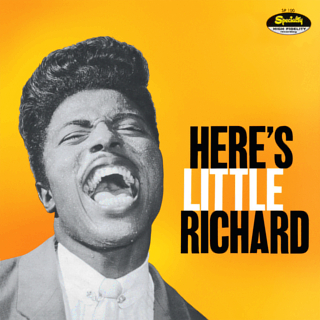
Here's Little Richard is the debut album by American musician Little Richard, released on March 4, 1957. Promoted as "six of Little Richard's hits and six brand new songs of hit calibre", the album compiles many of the A-sides and B-sides from Richard's hit singles including the Billboard top 40 entries "Tutti Frutti", "Long Tall Sally", "Slippin' and Slidin'", "Rip It Up" and "Jenny, Jenny" and the top 10 Rhythm and Blues Best-Sellers hits "Ready Teddy", "She's Got It" and "Miss Ann".
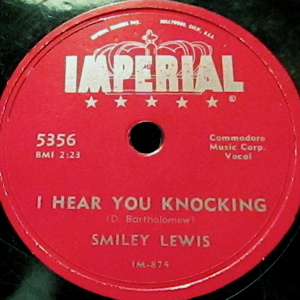
"I Hear You Knocking" is a rhythm and blues song written by Dave Bartholomew. New Orleans rhythm and blues singer Smiley Lewis first recorded the song in 1955. The lyrics tell of the return of a former lover who is rebuffed.

Tutti Frutti is a song written by Little Richard and Dorothy LaBostrie, recorded in 1955, which was his first major hit. With its energetic refrain, often transcribed as "A-wop-bop-a-loo-mop-a-lop-bam-boom!", and its hard-driving sound and wild lyrics, it became not only a model for many future Little Richard songs, but also for rock and roll itself. The song introduced several of rock music's most characteristic musical features, including its loud volume, powerful vocal style, and distinctive beat and rhythm.

Eskew Reeder, Jr., usually known by the stage name Esquerita, and occasionally as S.Q. Reeder or The Magnificent Malochi, was an American R&B singer, songwriter and pianist, known for his frenetic performances. He has been credited with influencing rock and roll pioneer Little Richard.

Your Filthy Little Mouth is the fourth full-length studio LP by David Lee Roth, then the former lead singer of the American rock band Van Halen. It was produced by Nile Rodgers whose work had included David Bowie and Madonna, and released in 1994 by Reprise Records.
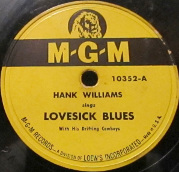
"Lovesick Blues" is a Tin Pan Alley song, composed by Cliff Friend, with lyrics by Irving Mills. It first appeared in the 1922 musical "Oh, Ernest", and was recorded that year by Elsie Clark and Jack Shea. Emmett Miller recorded it in 1925 and 1928, followed by country music singer Rex Griffin in 1939. The recordings by Griffin and Miller inspired Hank Williams to perform the song during his first appearances on the Louisiana Hayride radio show in 1948. Receiving an enthusiastic reception from the audience, Williams decided to record his own version despite initial push back from his producer Fred Rose and his band.
Travis Wammack is an American rock and roll guitarist from Memphis, Tennessee.
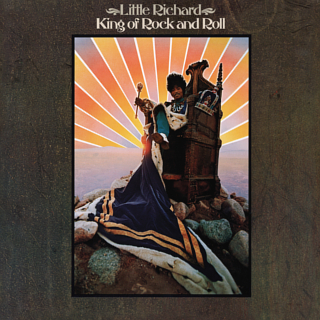
The King of Rock and Roll is an album by Little Richard, released in 1971. It was his second album for Reprise Records. It was rereleased as part of the King of Rock and Roll: The Complete Reprise Recordings set.

The Second Coming was Little Richard's third album for Reprise Records, released in 1972. The album saw him reunited with Robert "Bumps" Blackwell from his Specialty days, with them co-writing the majority of the album together. The concept was to unite the best rock studio musicians of the '50s with the best rock studio musicians of the '70s. The album failed to chart.

Southern Child is an album by Little Richard, scheduled to be released in 1972 as his third album for Reprise Records. It was going to be Reprise RS 2097. For unconfirmed reasons the album was shelved in favour of The Second Coming, released in October. The tracks comprising the album were released in 2005 from Rhino Records as part of their Complete Reprise Recordings collection. A stand-alone version was released in December 2020.
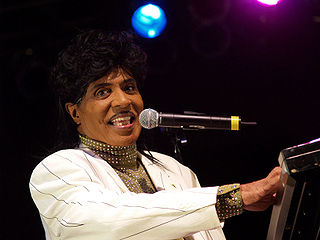
This page is a discography for American musician Little Richard (1932–2020). Described as "the architect of rock and roll", Little Richard was a pioneering singer-songwriter whose career also encompassed rhythm and blues, soul, and gospel. He began his recording career in 1951, signing to RCA Victor, releasing his first singles, and his first album in 1957, although he released his last album in 1992, he continued to tour into the 21st century. He attained international success after signing with Specialty Records in 1955.

Little Richard is the second album by American musician Little Richard, released in July 1958, ten months after Richard announced a retirement from rock and roll to pursue a life in the ministry. Like his first album, it largely contains previously released A-sides and B-sides including several which reached Billboard's Rhythm & Blues and Hot 100 charts. Nine of its twelve tracks charted in the US including Richard's fourth million-seller "Lucille", the rock and roll standard "Good Golly, Miss Molly" and "The Girl Can't Help It", the title song from the motion picture of the same name. Among the previously unreleased tracks are two Tin Pan Alley songs recorded in Richard's frantic style.
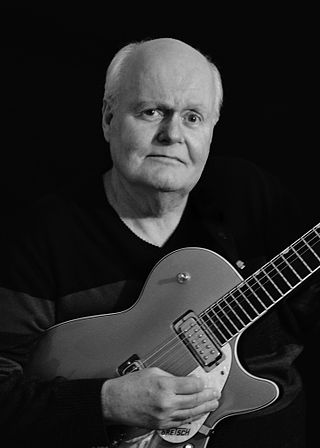
Jesse Willard "Pete" Carr was an American guitarist. Carr contributed to successful recordings by Joan Baez, Luther Ingram, Bob Seger, Paul Simon, Willie Nelson, Joe Cocker, Boz Scaggs, The Staple Singers, Rod Stewart, Barbra Streisand, Wilson Pickett, Hank Williams, Jr., and many others, from the 1970s onward.

Lifetime Friend is an album by Little Richard, released in 1986 and his first since the release of God's Beautiful City in 1979. Following that album's release and some 1981 recordings, backing tracks of which were used for TV appearances, Richard had made no recordings while he continued his career in the ministry. Following the release of his autobiography, The Quasar of Rock and Roll, in 1984, Richard reemerged in the public eye and had begun to be recognized for his contributions to popular music as one of the founders of rock and roll music.



















